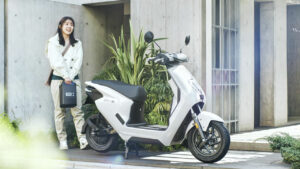Rules currently favor imports in 2-wheel EV market, Honda says
HONDA Philippines, Inc. said imports are currently a better option than local production in the two-wheel electric vehicle (EV) market, based on the rules now in place. “The Philippine regulations call for zero duty, which is good for imports. So it is better to import because if we invest in production, that will cost more […]

HONDA Philippines, Inc. said imports are currently a better option than local production in the two-wheel electric vehicle (EV) market, based on the rules now in place.
“The Philippine regulations call for zero duty, which is good for imports. So it is better to import because if we invest in production, that will cost more than importing. So that’s why we are now choosing to import,” Sayaka Arai, president of Honda Philippines, told reporters last week.
The company produces EV motorcycles in China, Indonesia, India, and Thailand.
“However, if the government’s laws and regulations change to benefit investment in local production, we want to consider producing this kind of electric motorcycle for the domestic market,” she added.
On June 20, President Ferdinand R. Marcos, Jr. signed Executive Order (EO) 62, which expanded the reduced Most Favored Nation tariff rates to other battery EVs, hybrid EVs (HEVs), plug-in hybrid EVs (PHEVs), and certain parts and components.
EO 62 also covered e-motorcycles, e-bicycles, nickel metal hydride accumulator batteries, e-tricycles and quadricycles, HEVs, and PHEV jeepneys or buses.
Ms. Arai said Indonesia provides incentives to manufacturers if they meet product localization targets.
“If the localization ratio is higher than that range, the company can get the incentive (when selling) electric vehicles,” she added.
A high level of localization will push manufacturers towards local production.
“That means more supply needs to be available in the country, which also means more employment in the country,” she said.
“That is accelerating the industrial wave in Indonesia for EVs,” she added.
She noted that EVs in the Philippines are still in the early stages of development following the adoption of the zero-import duty policy.
“The Philippines is only at the starting level for electric motorcycles. It’s just importing and expanding the market,” she said.
“But for the future, we would like to ask the government to consider the incentives for domestic manufacturing,” she added.
She said that the motorcycle market is around six million units in Indonesia; the Philippine one is two million.
Last week, Honda unveiled its first battery-powered motorcycle, the EM1 e: which has a suggested retail price of P155,400.
“Because the EV market is just at the starting level, we are targeting not so big numbers like 1,000 or 2,000 units,” she said.
In the previous financial year, Honda produced 750,000 motorcycles in its factory. Honda’s financial year runs from April to March.
“Two years before that, that was just 200,000. So our production is really increasing,” she said.
She added that the main driver for the increasing production is the Honda’s Click125 model, which is popular in the Philippines, and is being exported to New Zealand. — Justine Irish D. Tabile













